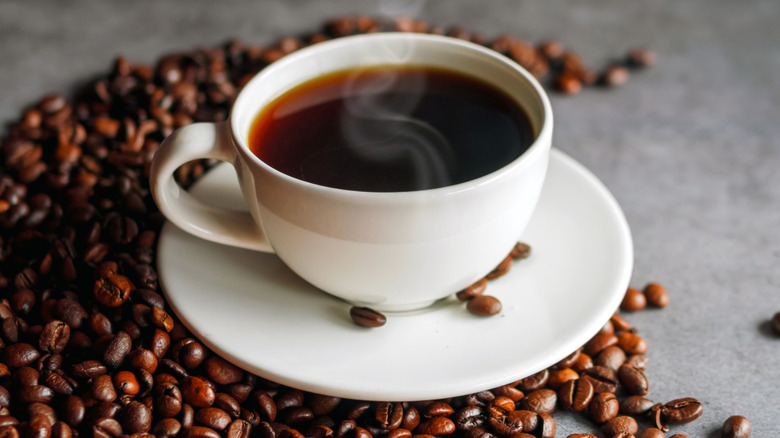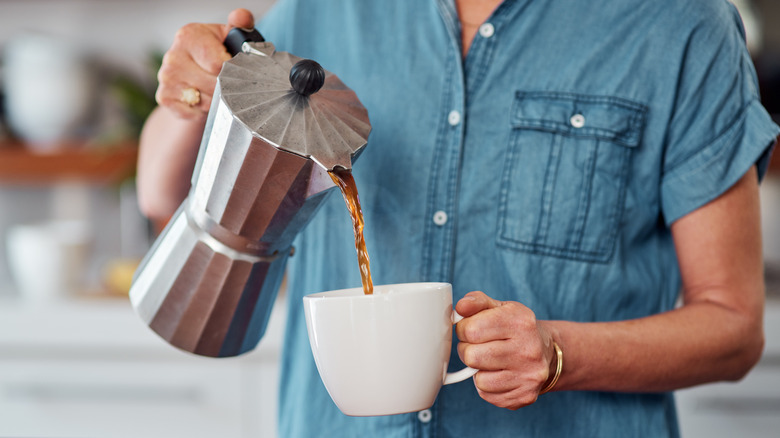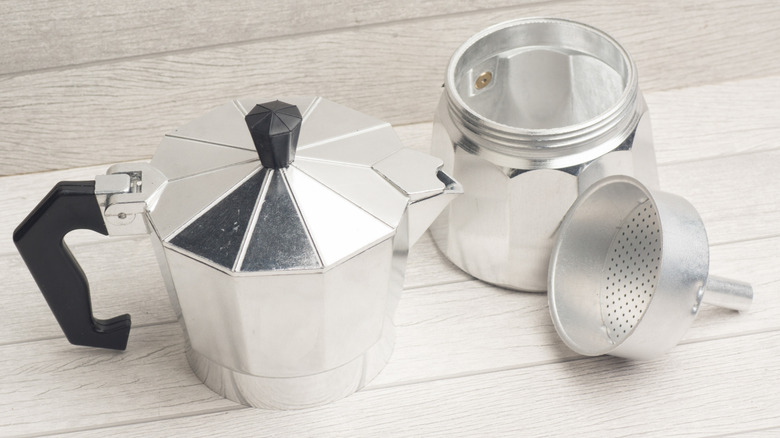The Espresso Machine Alternative You Need For An Inexpensive Brew
We may receive a commission on purchases made from links.
Having worked in a number of cafes around Seattle — commonly thought of as the coffee capital of the country — I like to think I am well-versed in coffee and espresso. Not to brag, but my cafe even won best coffee in the city two years in a row while I was working there. Though I am not currently a barista, I still take a lot of my training into consideration when making coffee at home; I grind my beans fresh according to whatever brew method I am using, keep several different roasts in my pantry at all times, weigh out my grounds in ratio with the amount of water I am using, and have a temperature controlled kettle.
But the most important thing I have learned from working in a cafe is that home espresso machines are a waste of money. Espresso is an exact science, and everything from the water temperature to the pressure used to push the hot water through the grounds must be flawless. No matter how much you spend on an espresso machine, it will need to be fixed and recalibrated on occasion, which involves hiring a specialist to repair all the delicate machinery. To me, it's not worth the headache.
But I still want to make a specialty latte at home, on occasion. And, in my home brewing experience, I've found that the best way to get a concentrated coffee drink that's on par with cafe-quality espresso is with a Moka pot.
What is a Moka pot?
A Moka pot initially looks like a humble piece of equipment when compared to the ornate mechanisms of a true espresso machine. But you might be surprised at how strong a cup of coffee it makes.
True espresso uses finely ground coffee that is packed into a portafilter, and the machine uses steam pressure to quickly push hot water through the grounds. Instead of regular coffee brewed in a drip coffee maker which uses gravity to pull hot water through the grounds, espresso machines make a small, heavily concentrated beverage that can be sipped as is. Of course, it's also great when diluted with steamed milk and flavored with syrups in the well-loved latte. Moka pot coffee has a much higher ratio of coffee to water compared to drip coffee, making for a less diluted beverage. Although a Moka pot does not make espresso in the traditional sense, it does create a much more concentrated brew, akin to espresso. This leads to much more flavorful lattes at home compared to brewed coffee, along with a variety of espresso drinks you can make.
How to use a Moka pot
A Moka pot resembles a taller, two-chambered teapot. There are three central parts to a Moka pot; the bottom reservoir, a funnel-shaped filter, and a top chamber or collector. To make coffee in a Moka pot, you fill up the bottom reservoir with water and add your coffee grounds to the basket of the filter before screwing on the top chamber. While you can always sub in a slew of alternatives if you're out of regular coffee filters, here, you'll want to stick to the built-in basket.
The assembled Moka pot then gets put on the stovetop. When the water starts to boil, the steam goes up through the grounds and collects in the top collector chamber. This brew method combines the use of steam used in espresso machines but with the longer extraction time — like drip coffee — to make a uniquely rich coffee.
From there you can use your coffee to make lattes, americanos, and cappuccinos — or just sip it as it is. (Now the best iced coffee might actually be at home.) Not only is a Moka pot, like the iconic Italian Bialeti Moka Express, much cheaper than an espresso machine — usually retailing for $15 to $30 compared to the hundreds or thousands of dollars you could spend on an espresso machine — a Moka pot is much more compact and takes up less space in your kitchen. Moka pots are also durable, and since they are so small, I even like to take mine camping for fresh, rich coffee whenever I want it.


